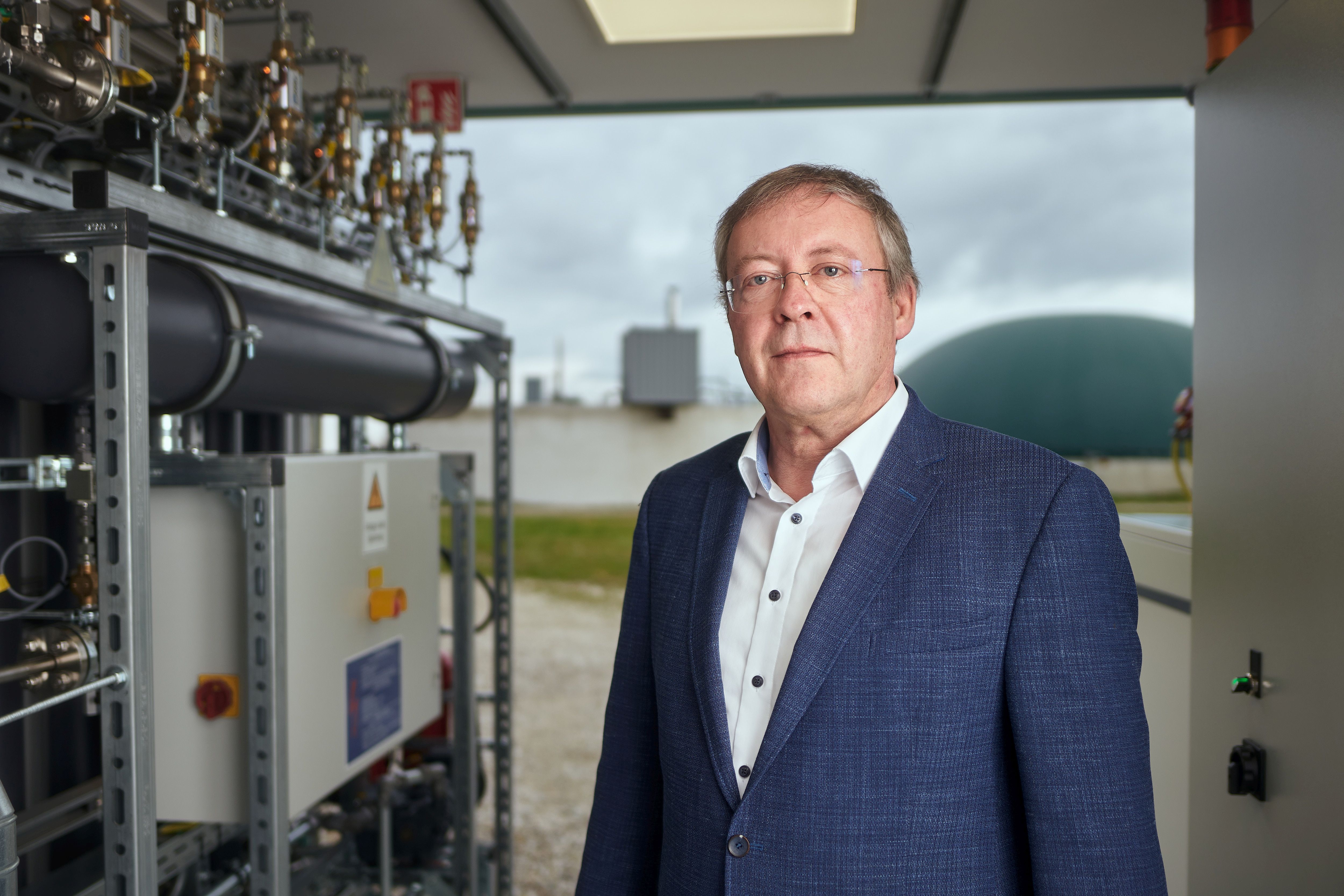The impact of climate change is constantly becoming more evident, and the war in Ukraine is making it even more urgent that we find new solutions for our energy supply. In an interview, two experts explain how these solutions might look. At the Research Center for Energy and Information (ZEI) Prof. Thomas Hamacher investigates how the energy revolution ("Energiewende") can be accelerated. This includes improvement and digitalization of energy infrastructure. Prof. Hartmut Spliethoff is an expert in the fields of energy system analysis, power plants, heat storage as well as hydrogen production and Power-to-X. He heads the TUM.Hydrogen and PtX network as well as the future lab for green hydrogen.
The calls for an embargo against natural gas deliveries from Russia are growing louder. Can renewable energy sources or supplies from other countries save us in the current situation?
Thomas Hamacher: Not in the short-term. 34 percent of our industry uses natural gas, 38 percent of private homes use it, and in the area of commerce, service provision and retail the figure is 28 percent. You can't replace that overnight, not even with liquified gas. We don't have many liquified gas terminals in Europe, and none at all in Germany. And they take several years to build.
What would be a viable option in the short-term time frame? Can atomic power and coal help compensate?
Hartmut Spliethoff: There will be very serious consequences if we lose natural gas. Private consumers can't just replace natural gas with coal or atomic power when the heating system is designed for natural gas. Short-term conversion to another energy source will be impossible in industry as well, it would entail as much as three years lead time.
One thing that could well be replaced is the generation of electricity using gas, which only accounts for 20 percent of natural gas consumption. Here we could fall back on fossil fuel sources and make more use of coal. Of course atomic power is another option, although this is currently a hotly debated issue. But this would be a short-term possibility in any case. Nobody is talking about building new atomic power plants, since that would be much too expensive and would not be financially viable in the private industry sector. Renewable energy sources are more cost-effective in this context.
How could we meet our energy needs while still doing without fossil-fuel-based energy to the greatest extent possible?

Hamacher: I think we should try to find a European solution. Southern Europe in particular, which has been suffering economically for such long time, has excellent solar power locations which could be expanded. In the north we have more wind energy. This would be a very good collaborative fit. There will always be a mixture when it comes to renewable energies: photovoltaics, wind energy, hydropower, biomass, geothermics. The main energy sources will be photovoltaics and wind energy. We need them both in order to establish a seasonal balance. Photovoltaics works better in the summer, wind energy is better in the winter. Then we'll also need technologies to compensate for the other fluctuations that still exist. And here among other things hydrogen plays a major role.
What part can hydrogen play in the energy revolution?
Spliethoff: The important thing is: Hydrogen is not a primary energy source like fossil fuels or renewable sources. It's a secondary energy source like electricity. What's referred to as green hydrogen, which is the focus for the future, is produced using renewable energies. The electrolysis used to produce hydrogen has an efficiency rate of from 60 to 70 percent. If hydrogen is converted into another energy source, for example a synthetic gas or fuel, more energy is lost in the process. In the case of passenger vehicles, electromobility is significantly more efficient than the use of regenerative hydrogen or synthetic fuels, since the conversion losses are eliminated and the electric motor is more efficient than the internal combustion engine.
On the other hand, heavy-load transport and aircraft require a high level of energy density, which means that hydrogen and the products derived from it are at an advantage here. Hydrogen is also very well-suited to serve as energy storage. Synthetic gas or liquid fuel can be made from hydrogen and easily transported. That's why there is also some discussion of producing hydrogen in areas with more sun, where solar energy generation is less expensive.
Will it still be necessary to further develop the technologies involved?
Hamacher: We've come a long way already, and we have to get started with implementation. Of course there are still open questions associated with these technologies. We have great wind turbines, but nevertheless there's still room for improving them. We already have electrolysis, but we can still improve it. But right now we're not expecting the great quantum leap which will suddenly solve everything. Of course each of these technologies still has a lot of development potential and more than anything, and we shouldn't underestimate this, these technologies will all have to work together in an integrated overall system. And we'll have to make that work first.
„We see that electricity comes out of the wall socket, but how it gets there is of little interest."- Prof. Hartmut Spliethoff
What projects are you currently working on in this area?
Hamacher: The project "Strom" ("Electricity"), supported by the Bavarian Research Foundation, is tailor-made for this situation. We're developing a tool for heat planning in all of Bavaria. This also has to be aligned with electricity planning, since in the future more and more heat will be generated using electricity. We're investigating how to expand the power grid, where should heat networks be created, where should heating technologies be applied. By the end of this year we expect to have initial results which will then hopefully also be implemented.
In our laboratory at the TUM Center for Combined Smart Energy Systems (CoSES) we're working on sector coupling. The goal is for electricity produced using renewable energy sources to be transported to all possible sectors, i.e. including the heating sector and the transportation sector. Here we want to understand all the important mutual interactions, including the infrastructure, for example, making sure that the car is being charged or the heat pump is used at exactly the point in time when the renewable power is also available.

Spliethoff: In the course of the energy revolution technologies for the production of hydrogen and synthetic energy sources from regeneratively produced electricity (Power-to-X) will play an important role. At TUM many research groups are working on this, under the coordination of the interdisciplinary network TUM.Hydrogen and PtX.
In the international project "Zukunftslabor für Grünen Wasserstoff" ("Future Lab for Green Hydrogen") we're working on reversible electrochemical fuel cells, biological hydrogen production and biomass as an energy source. For the use of biogas, the federally funded Research project "Bio CORE" developed a highly efficient process for converting biogas into electricity in a high-temperature fuel cell. The objective is also to operate this electro-chemical fuel cell on a reversible basis, which means in periods where we have a surplus of electricity we convert the electricity into natural gas which can then be stored, while in electricity deficit periods we can generate electricity from the natural gas. This is a highly efficient way to compensate for fluctuations in the generation of renewable energy in order to meet demands. A spin-off from our Chair will further develop this technology and market it.
What will the future system look like?
Hamacher: Scientists and energy experts continuously sketch out the energy scenarios of the future. But these images have only a very restricted quality when it comes to a real forecast. The systems have to fulfill political requirements. But there are uncertainties and conflicts in many areas: Do these future scenarios include plans for atomic technologies or methods for extracting and storing CO2, or not? Is the objective a global or European solution, or only a Bavarian solution? Is our lifestyle changing? We've worked on pan-European solutions again and again in the past. Here the foundation is wind and solar energy. Transportation of electric energy over long distances remains an issue, but it can in part be replaced by transporting hydrogen instead.
Entirely different systems would emerge if new nuclear technologies such as fusion were to become technically and economically viable. Then we would probably have highly regional supply centers which are only connected in today's system in order to be able to compensate for shortfalls more easily. But on the whole we always have to stay open to new possibilities. This is why these outlines of future scenarios have to be replaced with flexible planning processes which constantly work to make room for new ideas while taking concrete parameters such as emission thresholds into account.
Do you see increased acceptance and readiness to change in the area of energy due to the current situation?
Spliethoff: People are no longer aware of the great necessity of an independent energy supply that drives any and all activity, including the economy. We see that electricity comes out of the wall socket, but how it gets there is of little interest. Here we have to establish higher levels of acceptance.
Hamacher: We haven't yet seen a real shockwave pass through the general public. But maybe the current crisis will generate a new sense of the common good and maybe we'll then also be in a position to react with unconventional measures when bottlenecks do arise.






